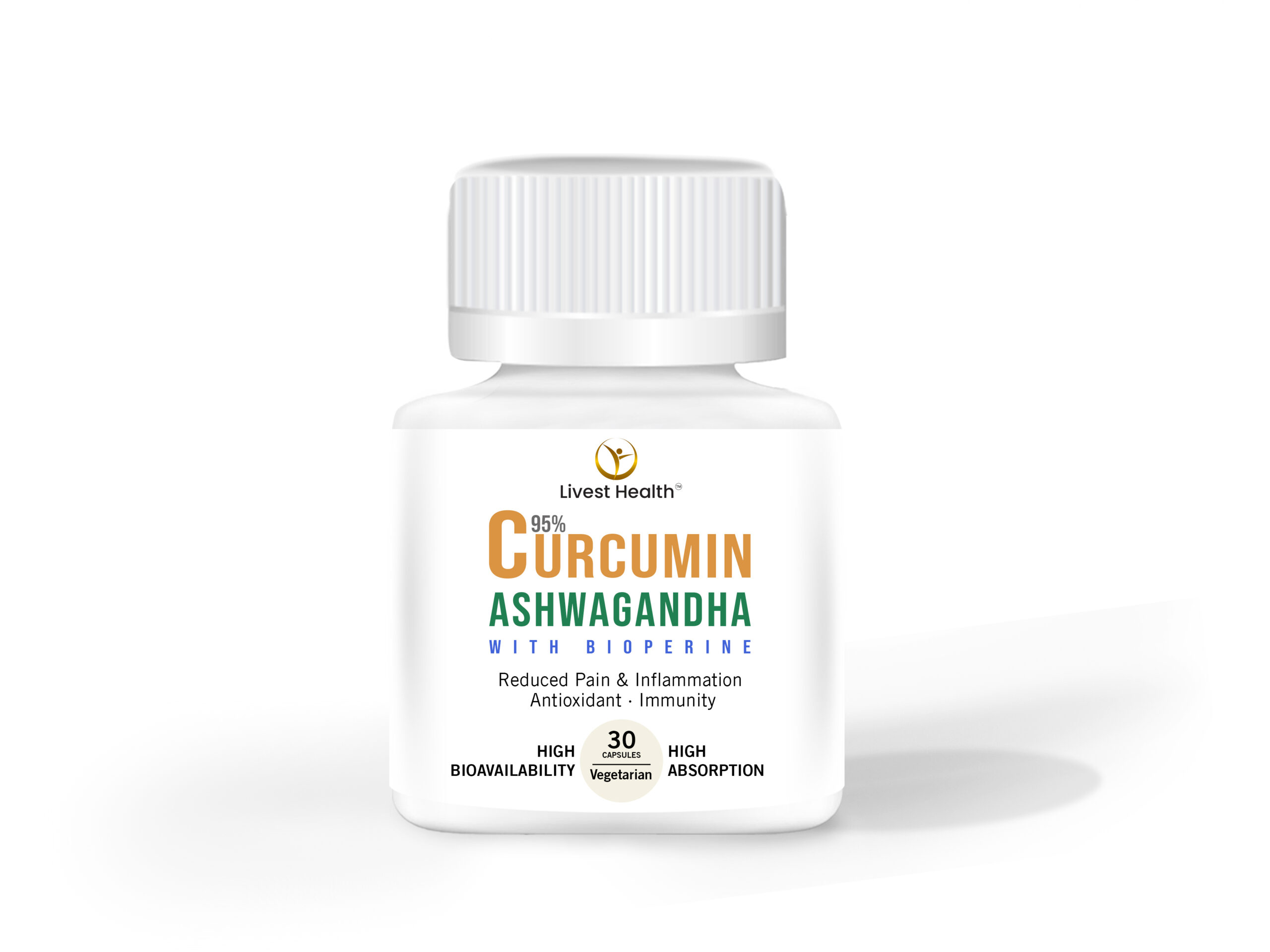Arthritis reminds us of painful episodes of stiffness and immobility.
The struggle with pain, swelling, and piercing sensations is not just limited to the elderly but also affects the younger ones. There are numerous types of arthritis.
Science says that 100 health conditions involve inflammation and damage to the joints and the tissue around them.
This article explores the science behind arthritis, a leading cause of work disability.
What is Arthritis?
Arthritis can be commonly explained as a condition of inflamed joints and tendons.
Arthritis is caused by degeneration of the cartilage around the bone, joint inflammation, metabolic conditions, and problems with the immune system.
The cartilage that cushions your bones wears off, leading to arthritis, which might happen gradually with age.

But this is also a common condition in younger adults because of inflammation. Inflammation might happen for various reasons, which will be covered as we read.
However, not everyone is affected by the same extremities and symptoms.
Non-inflammatory conditions like osteoarthritis can lead to changes in the cartilage structure with gradual wear and tear (What Causes Osteoarthritis, Symptoms & More | NIAMS, n.d.).
Types of Arthritis Conditions
| Arthritis | Type |
| Osteoarthritis | Non-inflammatory |
| Degenerative arthritis | Non-inflammatory |
| Rheumatoid arthritis | Autoimmune disease |
| Psoriatic arthritis | Autoimmune disease |
| Ankylosing spondylitis | Autoimmune disease |
| Gout | Crystal deposition induces inflammation |
| Pseudogout | Crystal deposition induces inflammation |
| Basic calcium phosphate disease | Crystal deposition induces inflammation |
| Septic arthritis | Infections |
| Lyme’s arthritis | Infections |
| Auto-immune connective tissue disease | Inflammatory diseases |
| Systemic lupus erythematosus | Inflammatory diseases |
| Sjogren’s syndrome | Inflammatory diseases |
| Scleroderma | Inflammatory diseases |
| Myositis | Inflammatory diseases |
| IBS, celiac disease | Inflammatory diseases |
Causes of Arthritis
‘What triggered my arthritis?’ is a common question by people in general.
So, what are the causes of arthritis?
The answer is inflammation!
Inflammation is the major reason for arthritis. Inflammatory cytokines are released due to:
- Trauma: Accidents and injuries to tendons, joints, and cartilage can cause post-traumatic arthritis (PTA). This might damage or deform the joint structures, causing wear and tear. PTA causes about 12% of all osteoarthritis cases. (Punzi et al., 2016)
- Stress: It is not new that stress negatively impacts hormone receptors, leading to pro-inflammatory cytokines, which cause chronic inflammation. However, stress alone will not lead to arthritis. A combination of factors like stress, unhealthy eating habits, poor sleep quality, genes, lack of movement, and other health conditions can lead to inflammatory conditions in the body (Easing Stress, Easing Arthritis Symptoms, n.d.).
- Overweight: Excessive weight gain puts pressure on the joints and increases your chances of developing arthritis by 60%. Obesity, arthritis, and morbidity have a linear relationship, wherein the risk of arthritis is increased with obesity, and obesity increases the chances of co-morbid conditions accompanied by arthritis. (The Link Between Excess Weight and Arthritis: W. Joseph Absi, MD: Sports Medicine Specialist, n.d.)
- Bacterial infections or sepsis: Bacterial infections and sepsis can increase the chances of synovial bacteria. This condition is called septic arthritis, which leads to joint damage. (Shirtliff & Mader, 2002)
- Autoimmune diseases: Rheumatoid arthritis is one of the best examples that explain arthritis triggered by autoimmune conditions. Myositis, fibromyalgia, systemic lupus erythematosus, scleroderma, IBS, and celiac disease are some of the autoimmune diseases. These diseases are preceded by an overactive immune system releasing pro-inflammatory cytokines as there is an interplay between the nervous and immune systems. (Paget, 2012)
- Gout: The most common cause of chronic inflammatory arthritis is gout. The uric acid disturbance leads to the crystallization of monosodium urate monohydrate and deposition in the tissues. Gout seems to affect the osteoarthritic joints more often. (Ragab et al., 2017)
Symptoms of Arthritis
Although the symptoms are the same in all types of arthritic conditions, the severity of pain and swelling varies from one condition to another.
The general symptoms of arthritis are:
- Pain
- Redness and swelling
- Stiffness
- Difficulty in movements
Most of the symptoms are observed in the first 45 minutes after you wake up in the morning and at rest. The symptoms aggravate with increased activity and stress.
At the same time, the symptoms can calm down as the day passes.
Medication and Treatment
- Non-steroidal anti-inflammatory drugs (NSAIDs), both oral and topical
- Topical ointments for pain relief
- Physical therapy
- Acupuncture
- Weight reduction and diet management
- Corticosteroid injections
- Glucocorticoids
- Medications that reduce uric acid levels
- Surgical replacement of affected joints
- Disease-modifying anti-rheumatoid drugs (DMARDs)
- Synovial fluid replacements.
Medication and treatment vary from person to person depending on their symptoms, physical manifestations, and diagnosis.
A Dedicated Diet for Arthritis
- An anti-inflammatory, Mediterranean, and plant-based diet is mostly recommended for arthritis or inflammatory conditions.
- Sugar, refined starches, trans fats, gluten (found in wheat), casein (found in dairy), red meat, fried foods, smoking, and alcohol should be avoided.
- A low PRAL diet (potential renal acid load) is an alkaline-promoting diet that helps maintain body alkalinity by reducing excessive acidic complications.(Caciano et al., 2015)
- Supplements like magnesium, vitamin D, curcumin, nicotinamide mononucleotide (NMN), and coenzyme Q10 are also recommended to improve health.
- Physical exercise and physiotherapy are essential in recovery and pacifying the symptoms like immobility and stiffness.

Takeaway
To sum up, the causes of arthritis can be a combination of factors that interplay, leading to pro-inflammatory conditions and an increased acidic environment in the body.
Arthritis is non-reversible, and you must only focus on pacifying the symptoms to overcome the hindrance in your daily activities.
Anti-inflammatory diets, plant-based diets, physiotherapy, meditation, improved sleep quality, and some forms of physical activity are some precautionary actions that can be considered to improve the quality of your life.
Vitamin supplementation, medication, probiotics, and prebiotics will also improve health. However, consider professional advice before taking multiple medications to rule out any drug interactions that might aggravate arthritis and its symptoms.
Related Supplements




References
- Caciano, S. L., Inman, C. L., Gockel-Blessing, E. E., & Weiss, E. P. (2015). Effects of Dietary Acid Load on Exercise Metabolism and Anaerobic Exercise Performance. Journal of Sports Science & Medicine, 14(2), 364. /pmc/articles/PMC4424466/
- Easing Stress, Easing Arthritis Symptoms. (n.d.). Retrieved March 12, 2024, from https://www.webmd.com/arthritis/features/reduce-stress-ease-pain
- Paget, S. A. (2012). The Microbiome, Autoimmunity, and Arthritis: Cause and Effect: An Historical Perspective. Transactions of the American Clinical and Climatological Association, 123, 257. /pmc/articles/PMC3540616/
- Punzi, L., Galozzi, P., Luisetto, R., Favero, M., Ramonda, R., Oliviero, F., & Scanu, A. (2016). Post-traumatic arthritis: overview on pathogenic mechanisms and role of inflammation. RMD Open, 2(2), 279. https://doi.org/10.1136/RMDOPEN-2016-000279
- Ragab, G., Elshahaly, M., & Bardin, T. (2017). Gout: An old disease in new perspective – A review. Journal of Advanced Research, 8(5), 495. https://doi.org/10.1016/J.JARE.2017.04.008
- Shirtliff, M. E., & Mader, J. T. (2002). Acute Septic Arthritis. Clinical Microbiology Reviews, 15(4), 527. https://doi.org/10.1128/CMR.15.4.527-544.2002
- The Link Between Excess Weight and Arthritis: W. Joseph Absi, MD: Sports Medicine Specialist. (n.d.). Retrieved March 12, 2024, from https://www.absiortho.com/blog/the-link-between-excess-weight-and-arthritis
- What Causes Osteoarthritis, Symptoms & More | NIAMS. (n.d.). Retrieved March 12, 2024, from https://www.niams.nih.gov/health-topics/osteoarthritis






